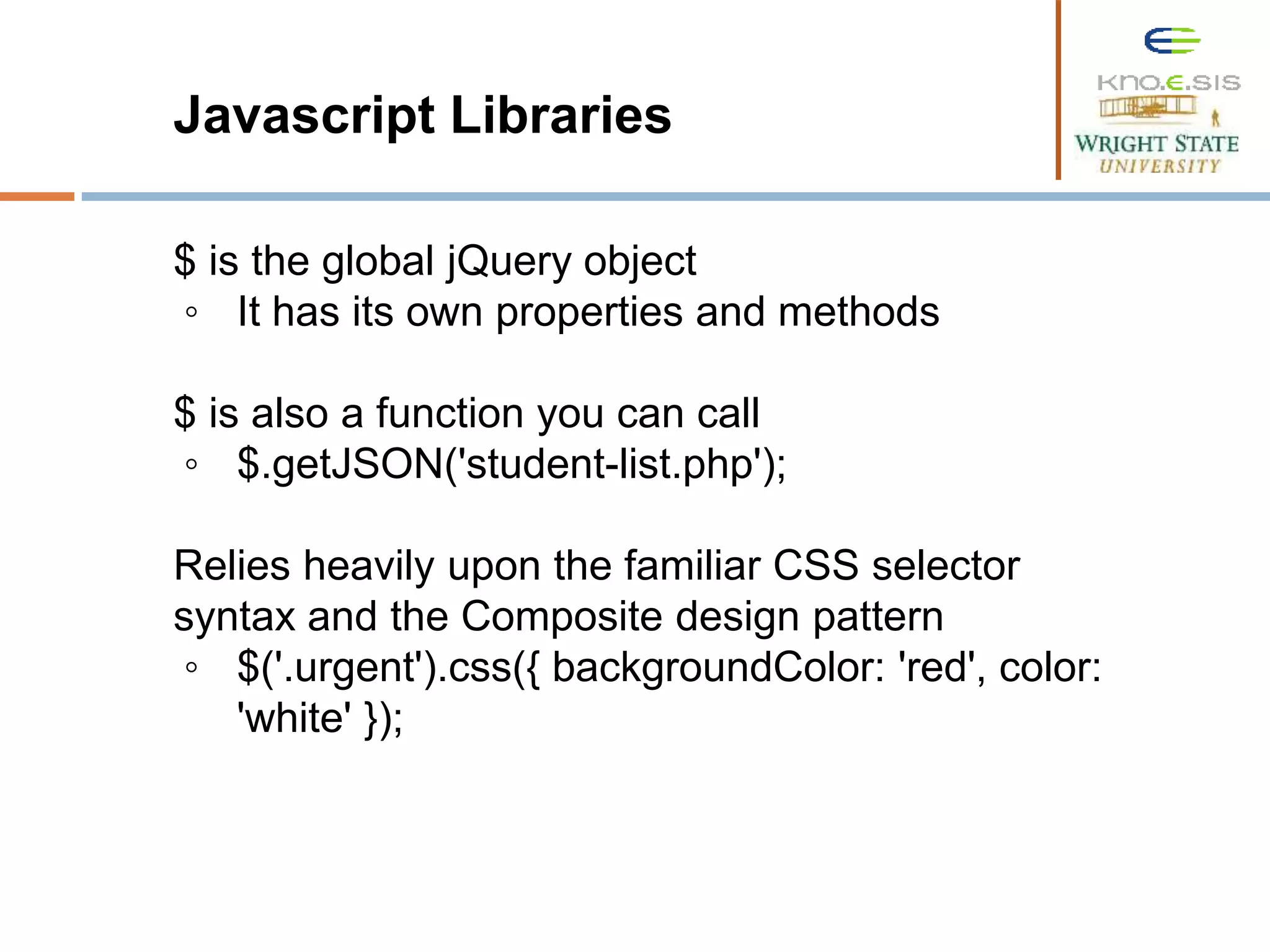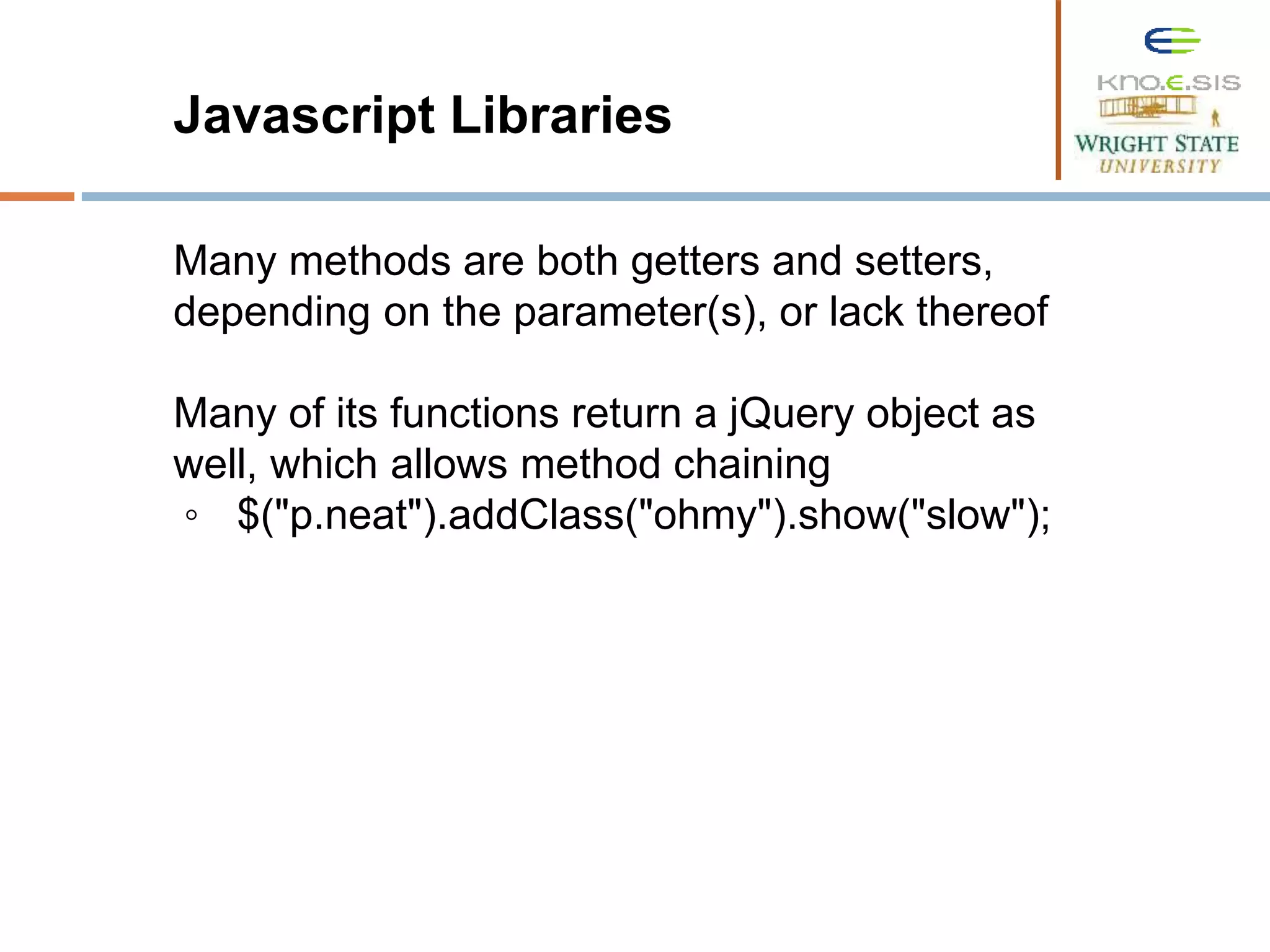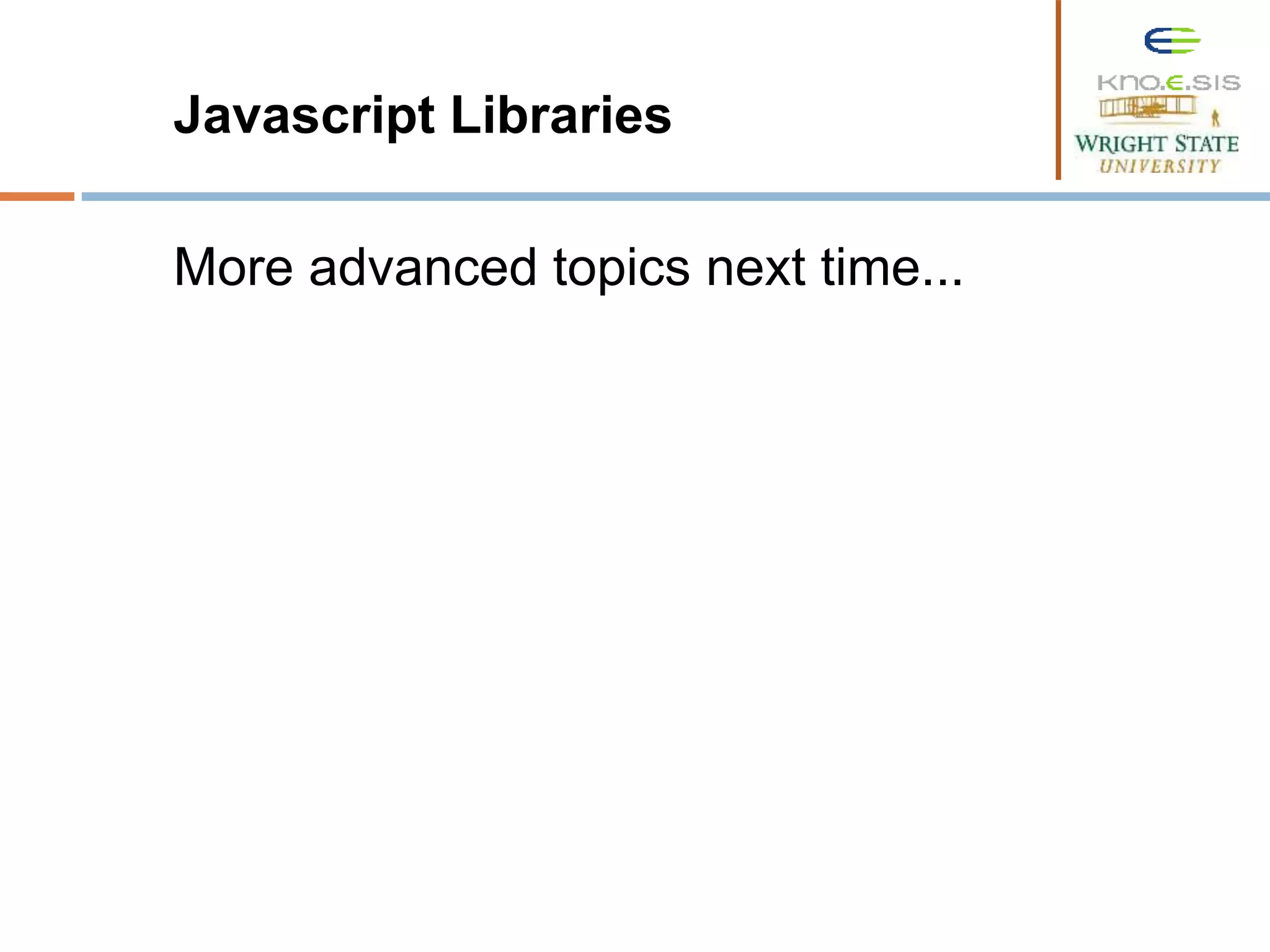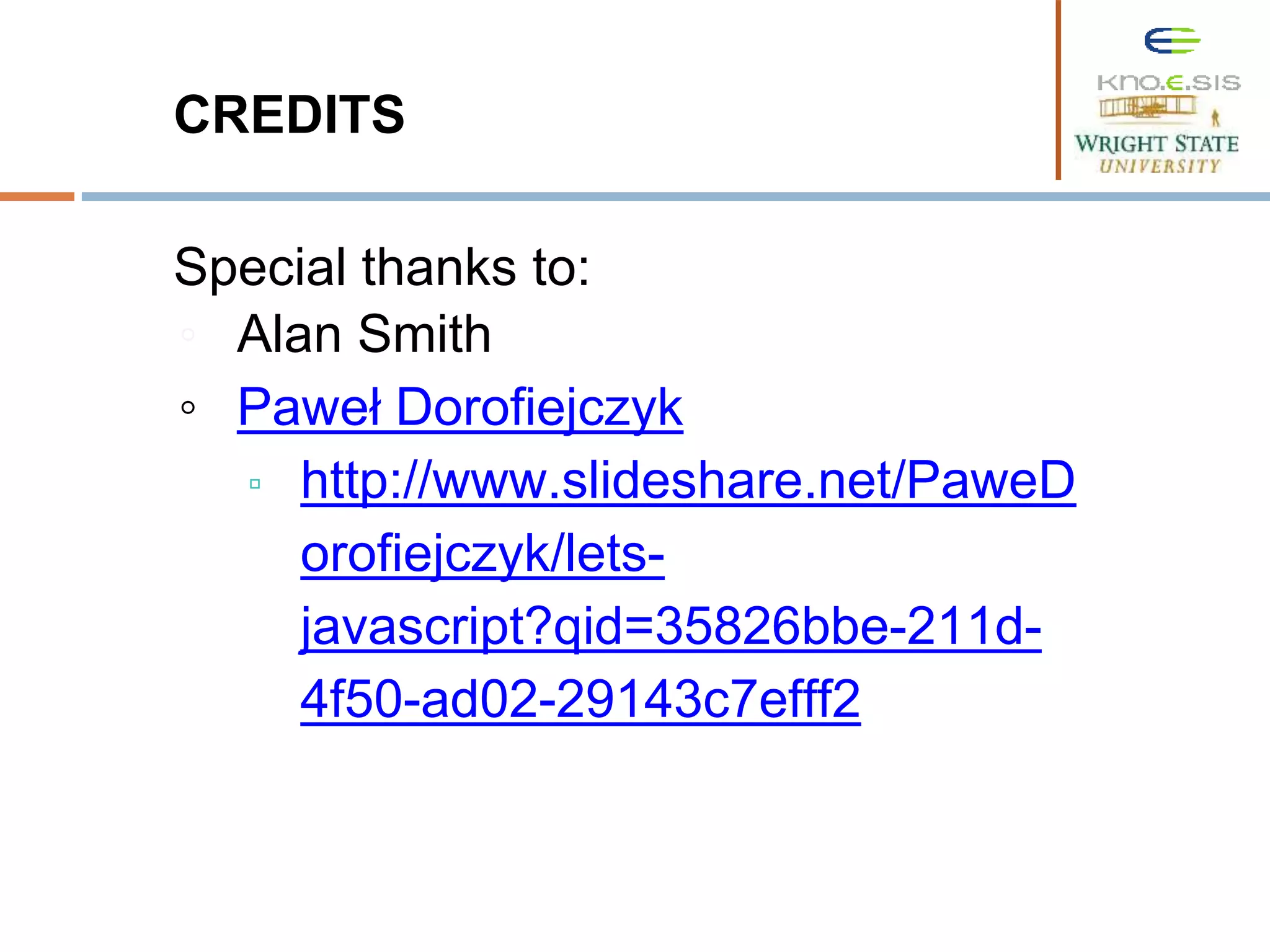This document provides an overview of JavaScript, including: - JavaScript is a prototype-based, dynamic, loosely typed, multi-paradigm scripting language used primarily for client-side web applications. - JavaScript can also be used for server-side applications with Node.js, databases like MongoDB, and other applications. - The basics of JavaScript include variables, functions, objects, and operators. Functions have their own scope and arguments are passed by value for primitives and by reference for objects. - The Document Object Model (DOM) represents HTML documents and allows JavaScript to programmatically access and modify elements and attributes. - Popular JavaScript libraries like jQuery simplify DOM manipulation and other tasks, using CSS selectors
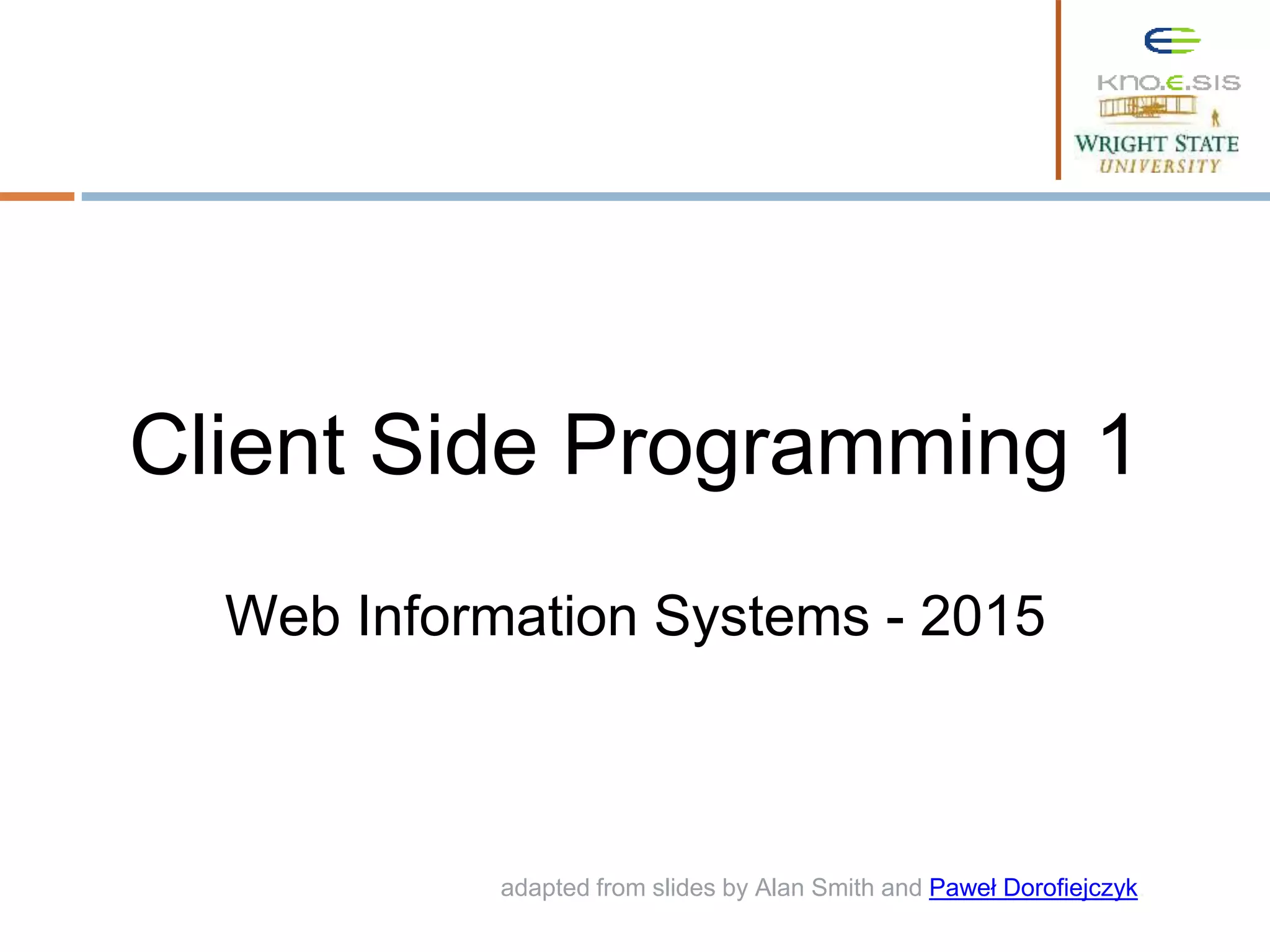
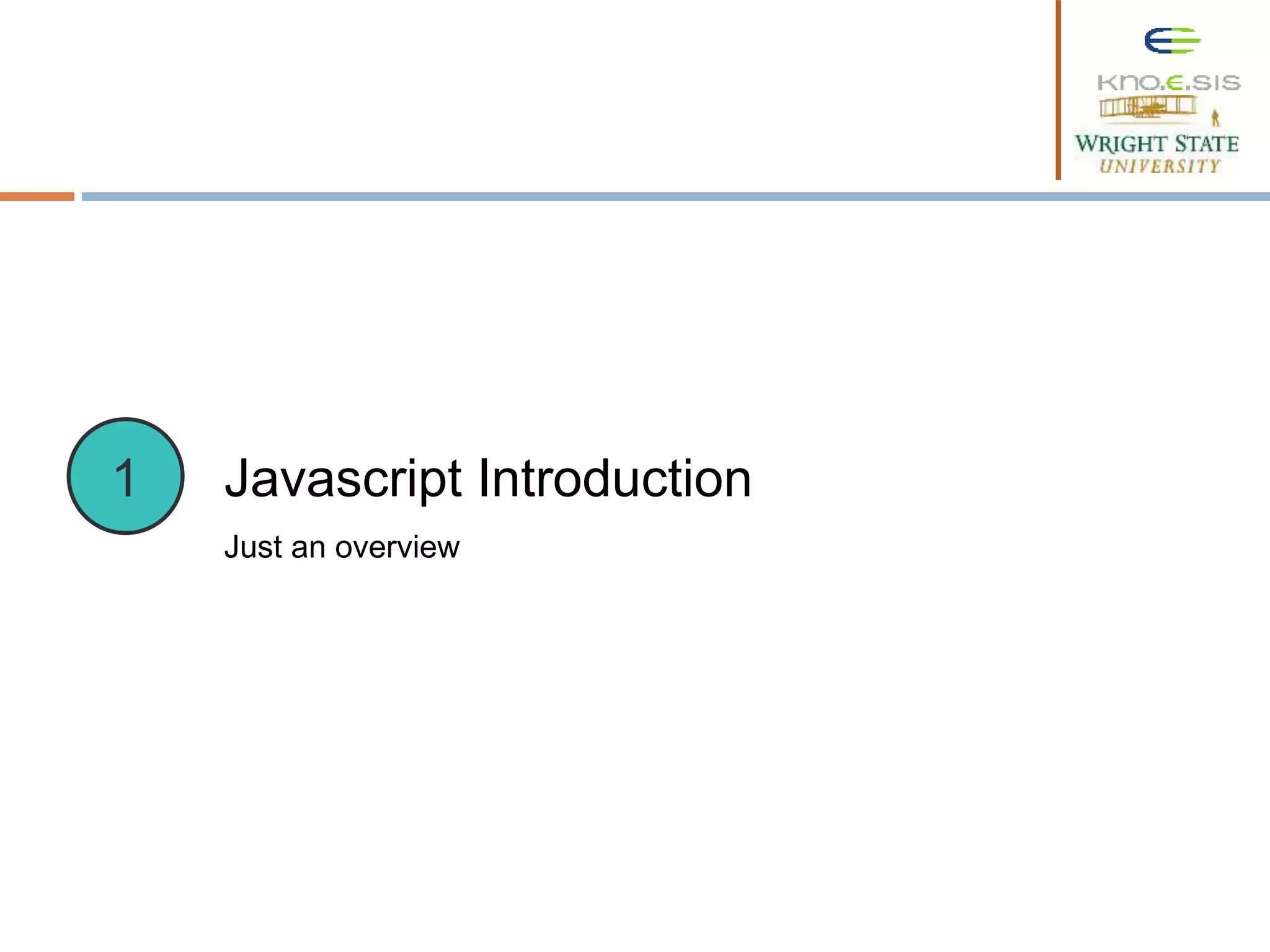
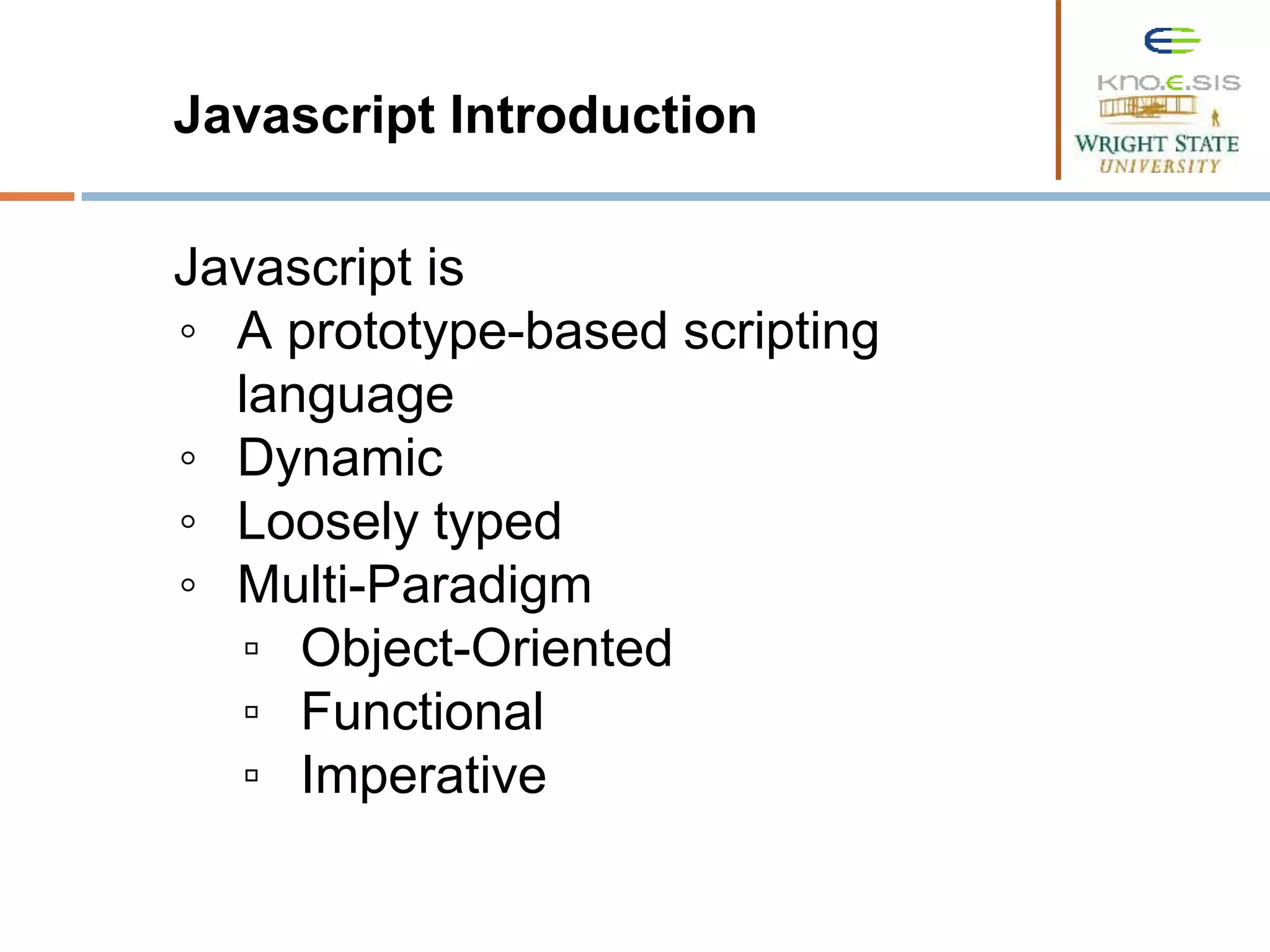
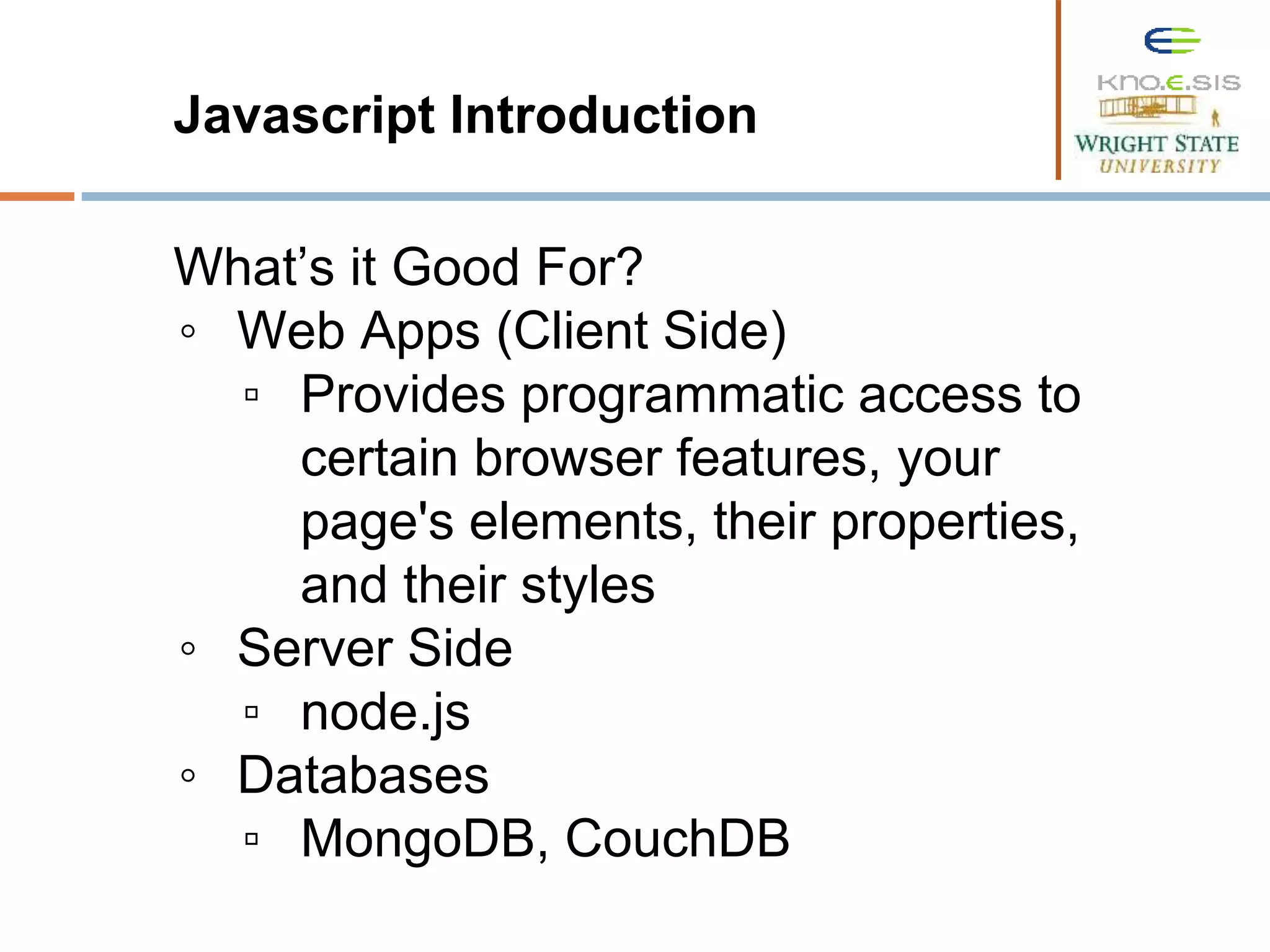
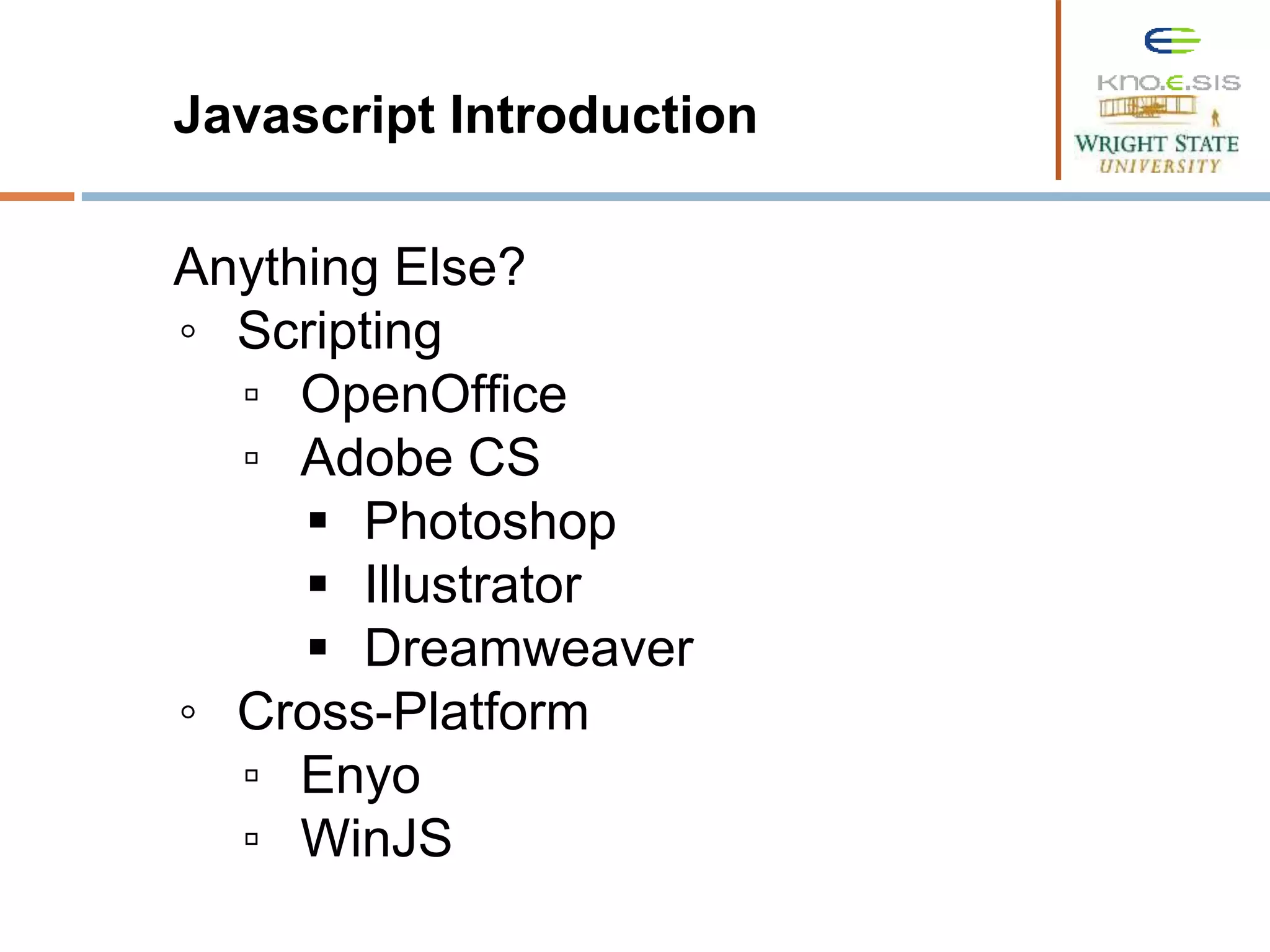
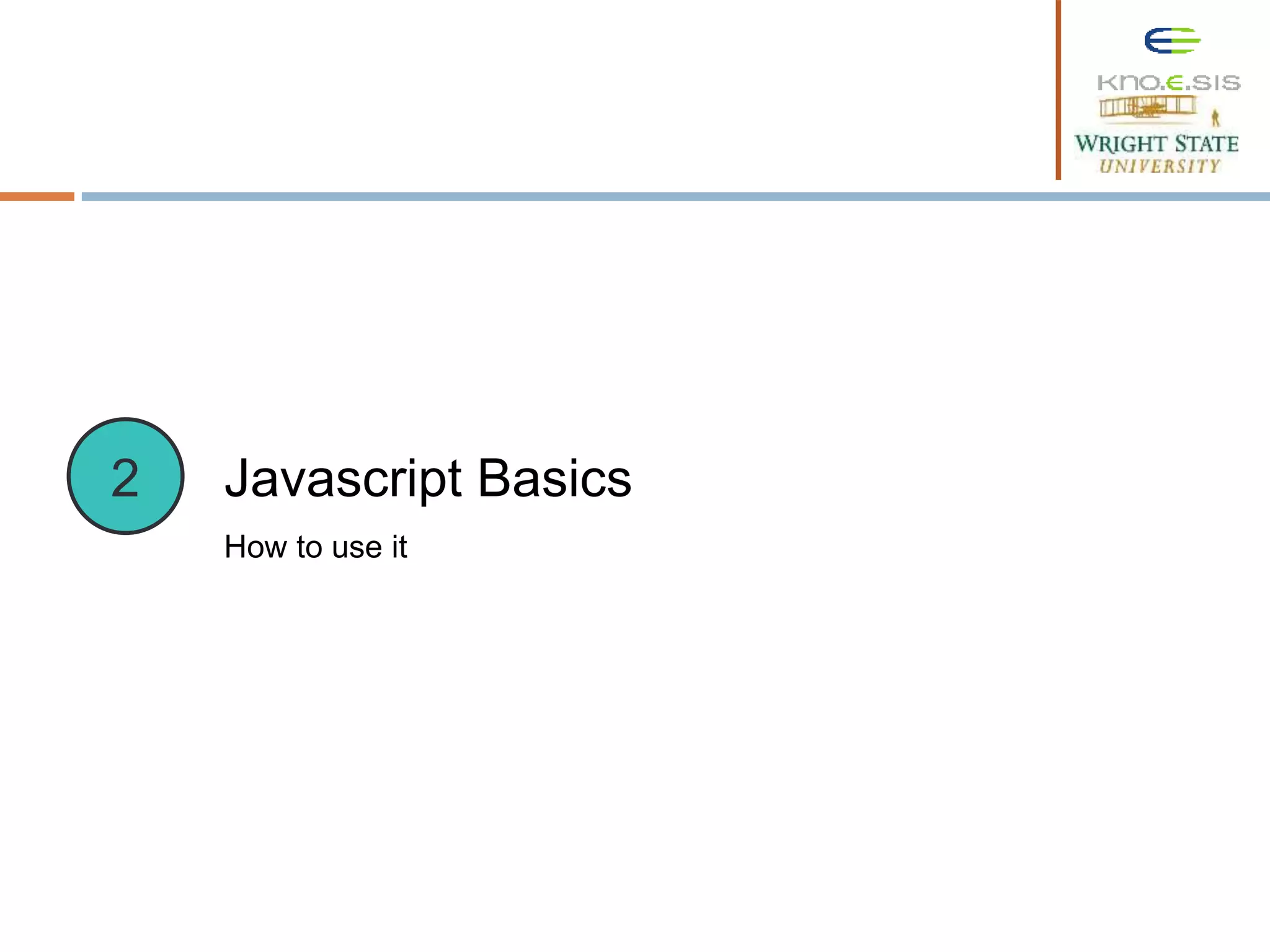
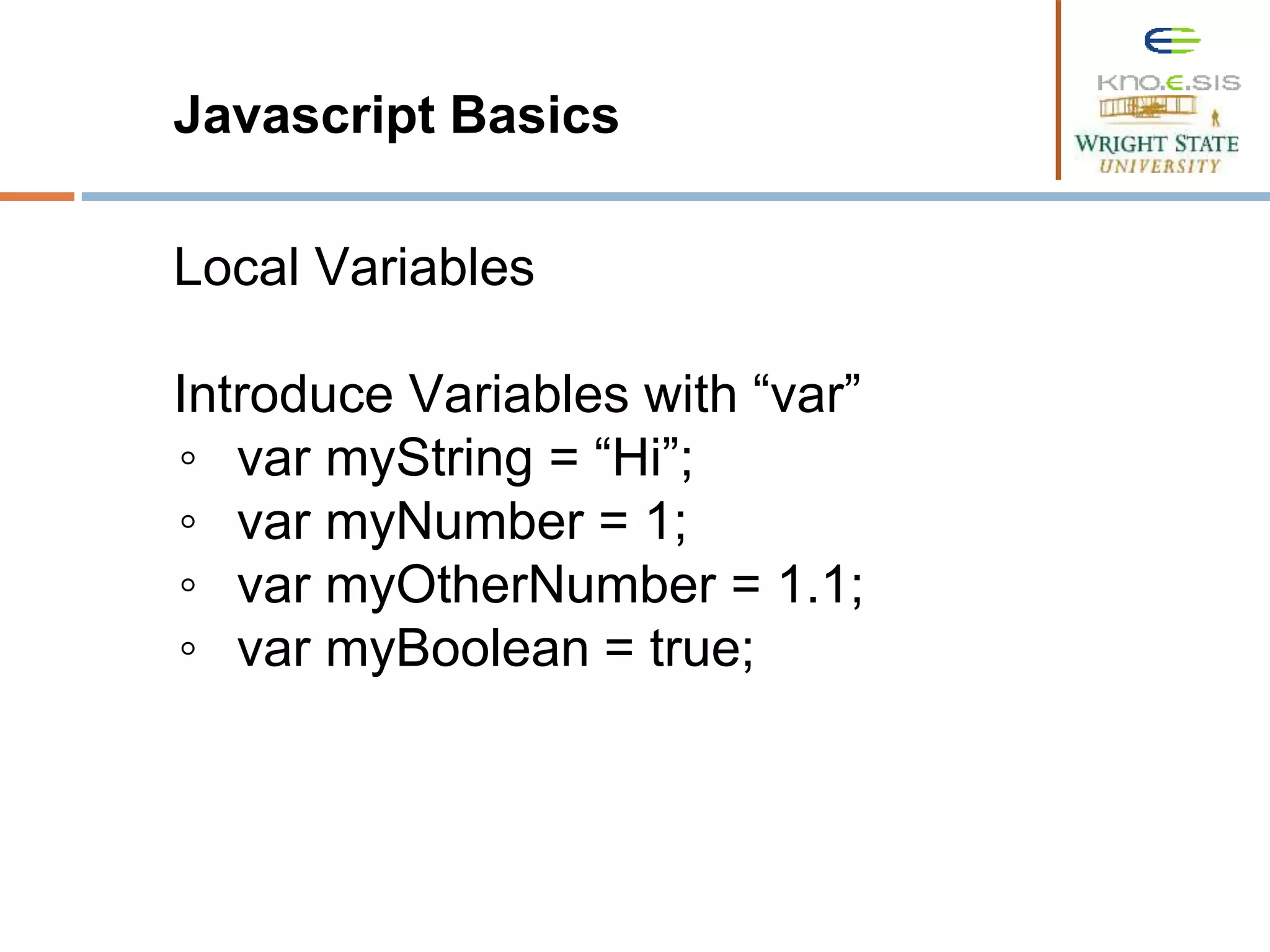
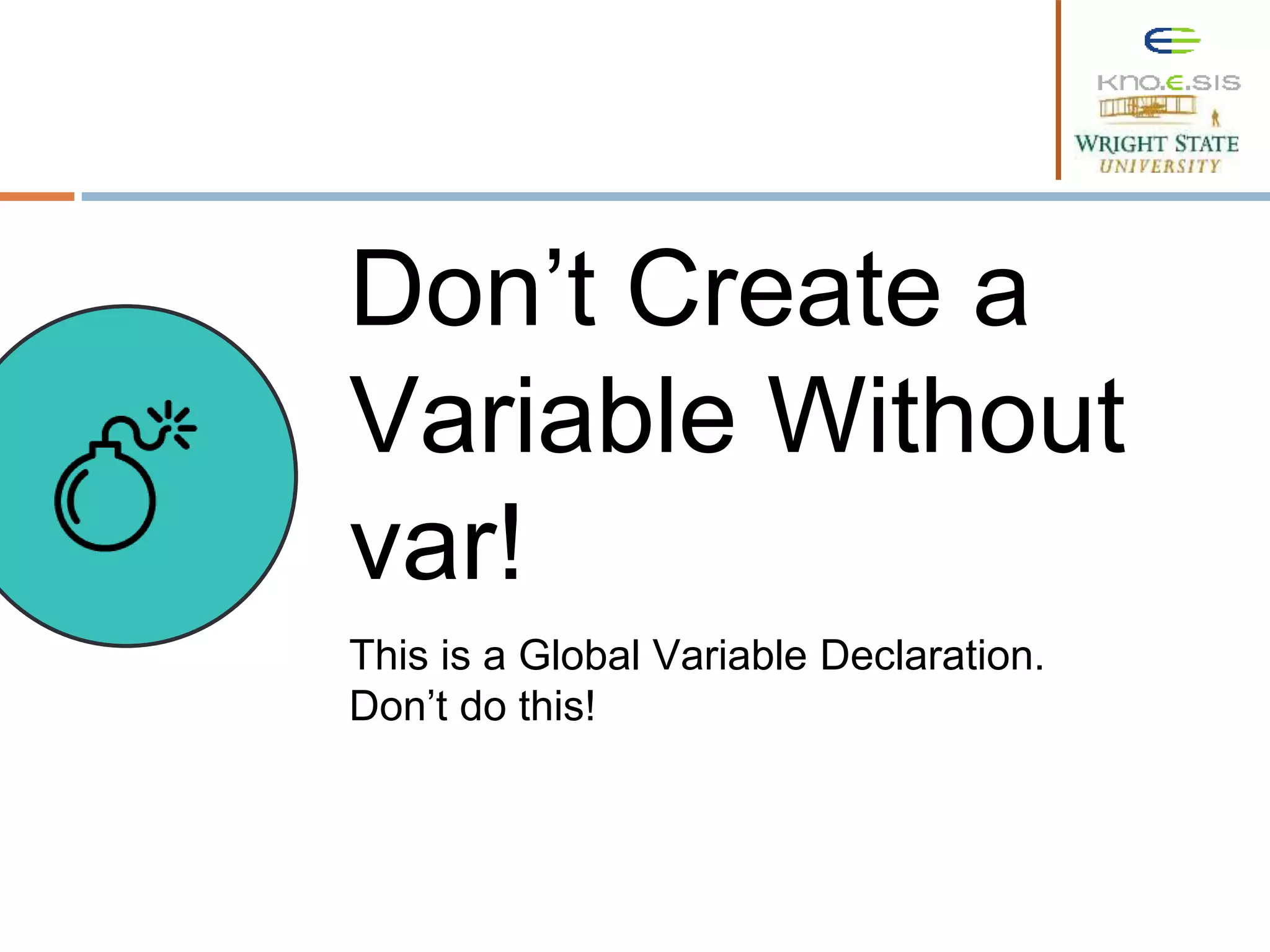
![Javascript Basics Variable Types typeof ◦ typeof “hi”; // string Gotchas ◦ typeof []; // object ◦ typeof null; // object ◦ typeof NaN;// number](https://image.slidesharecdn.com/csp1-150123133332-conversion-gate01/75/Lecture-5-Client-Side-Programming-1-9-2048.jpg)
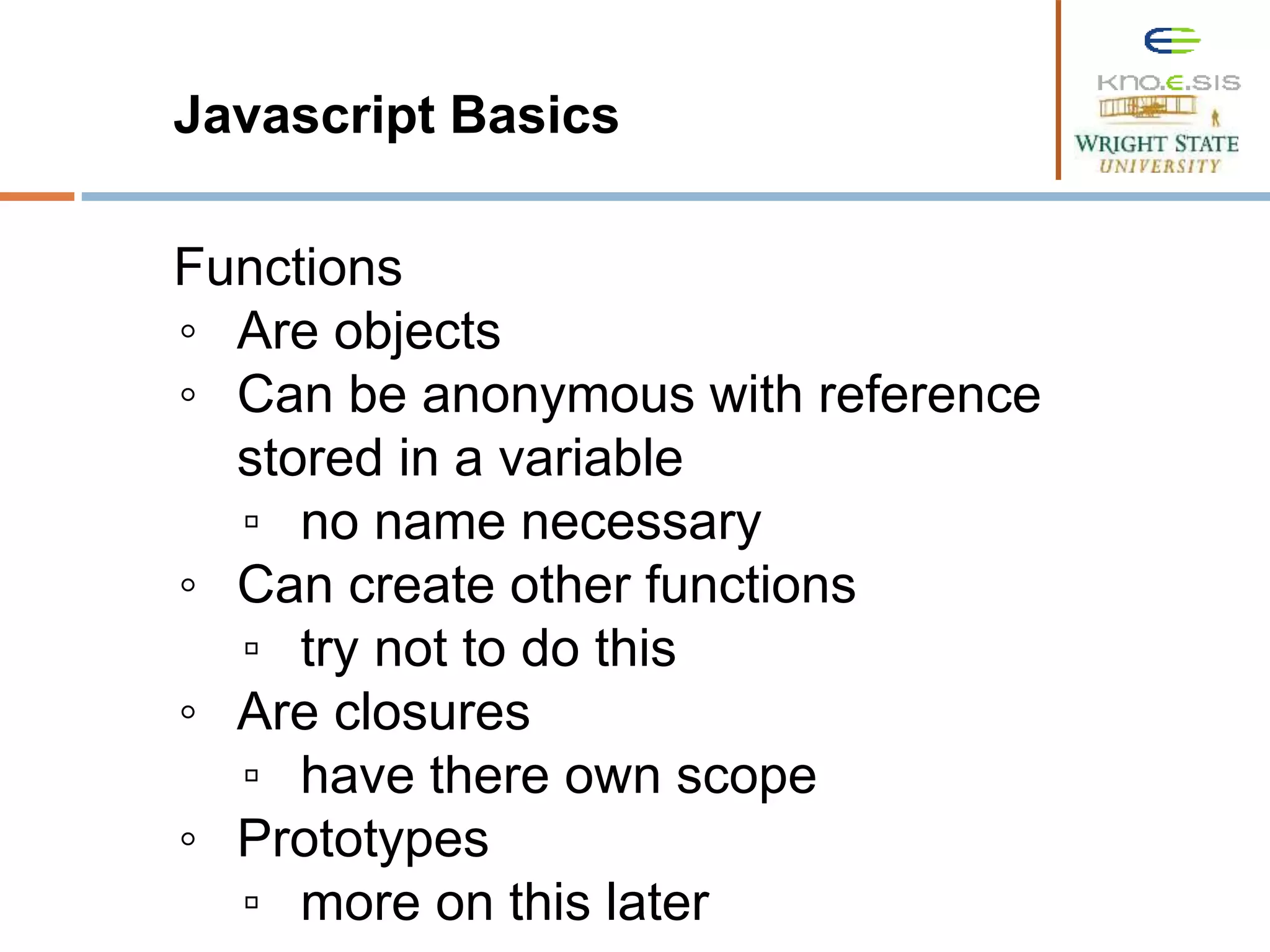
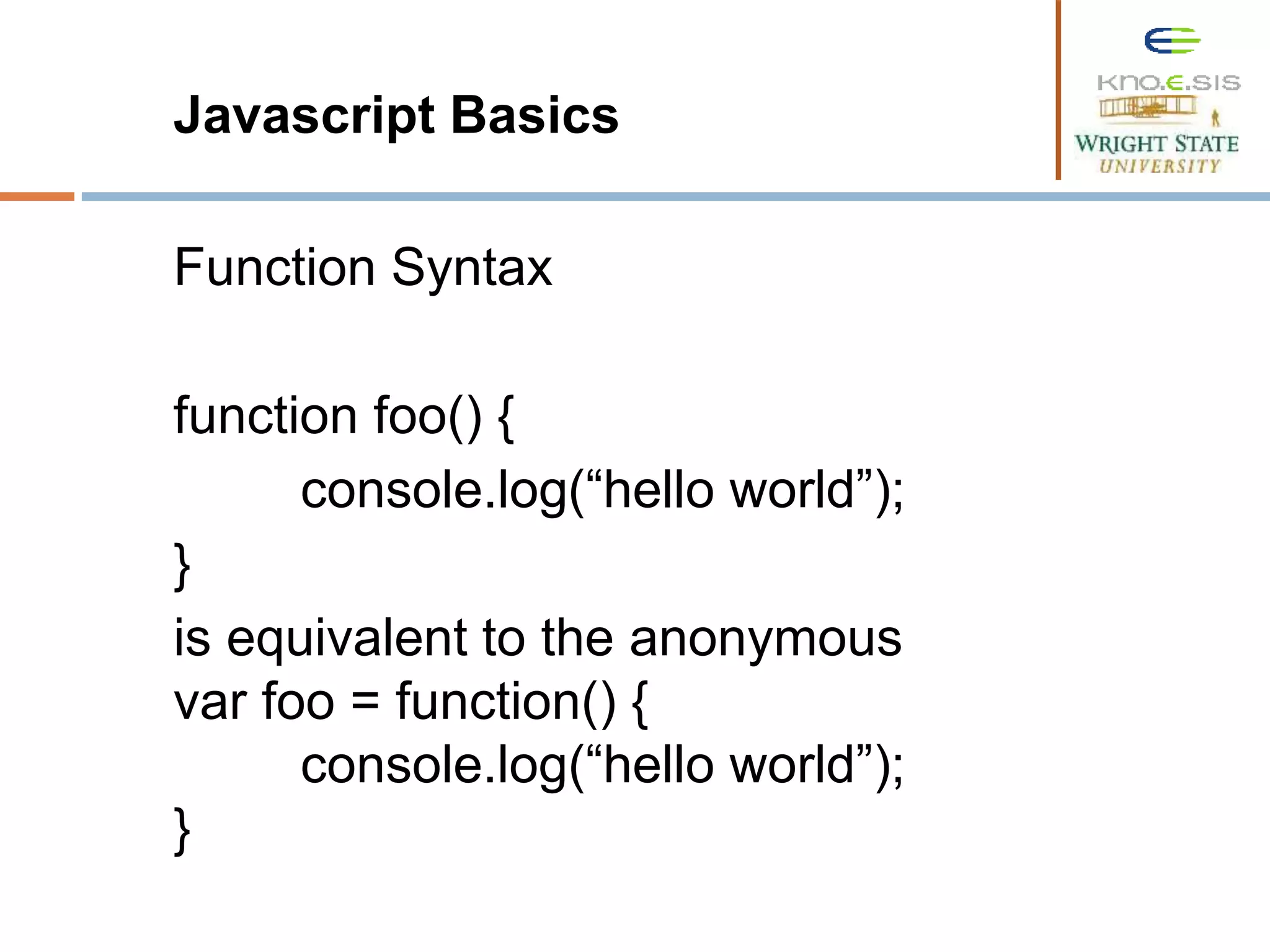
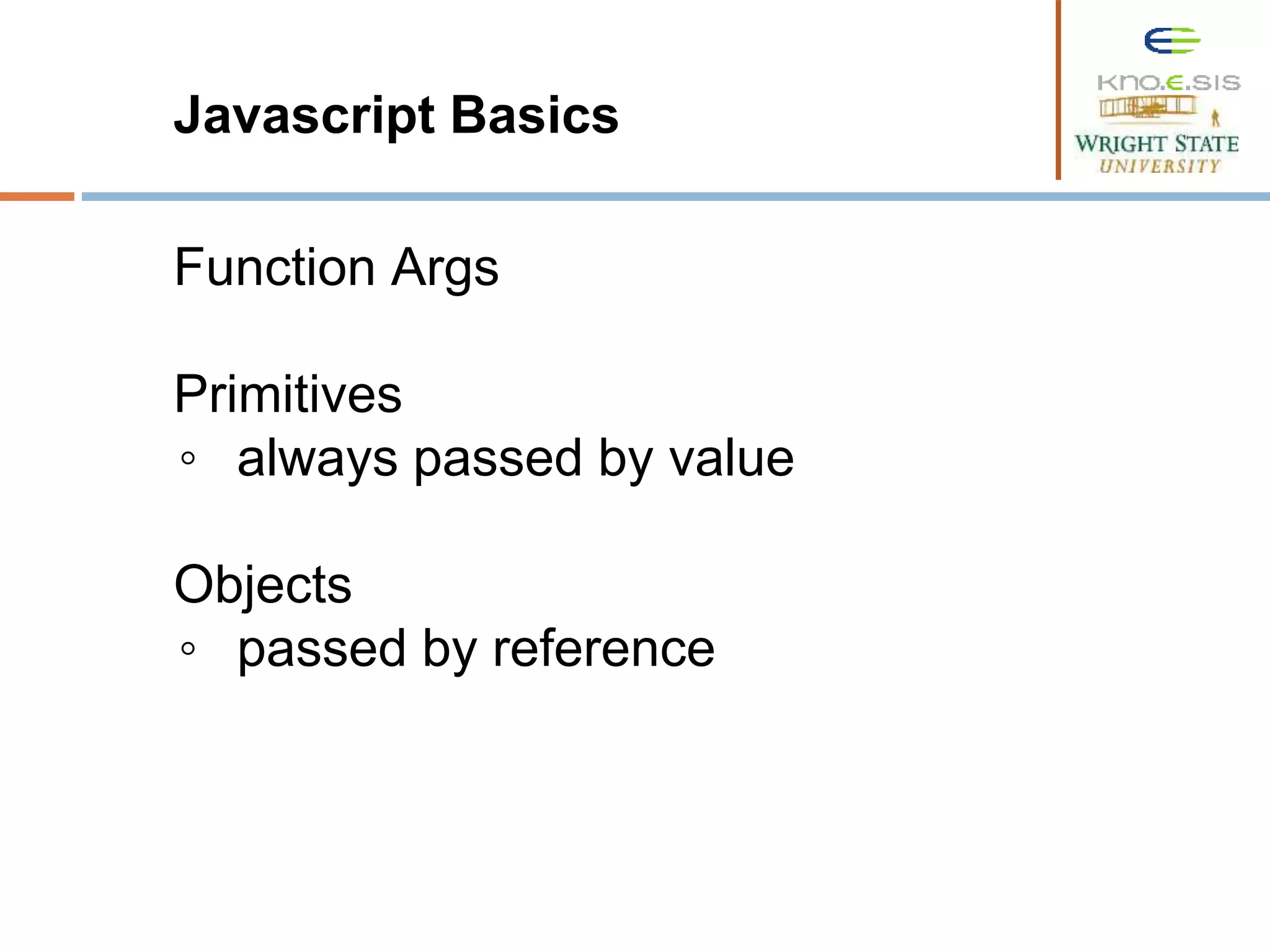
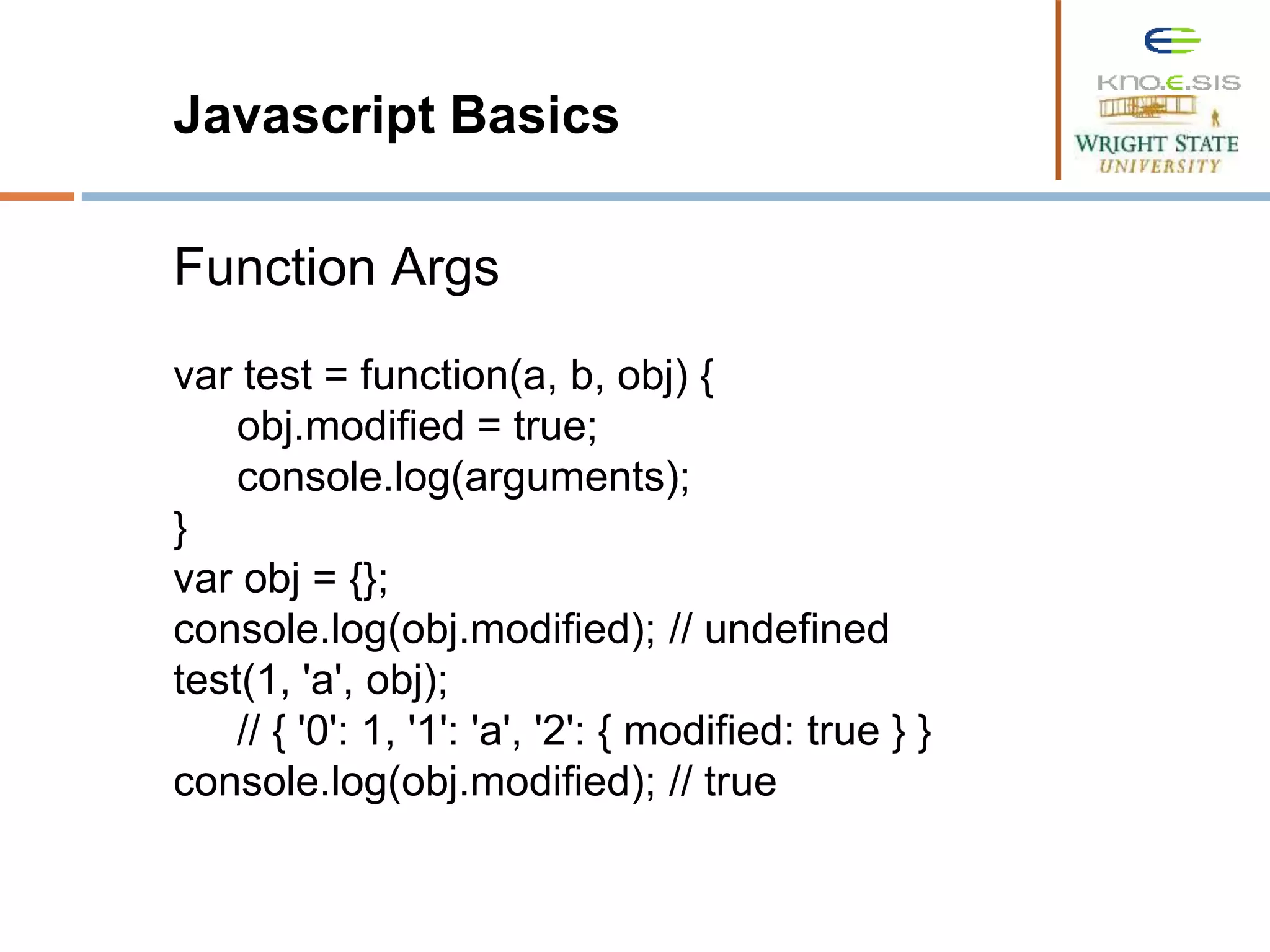
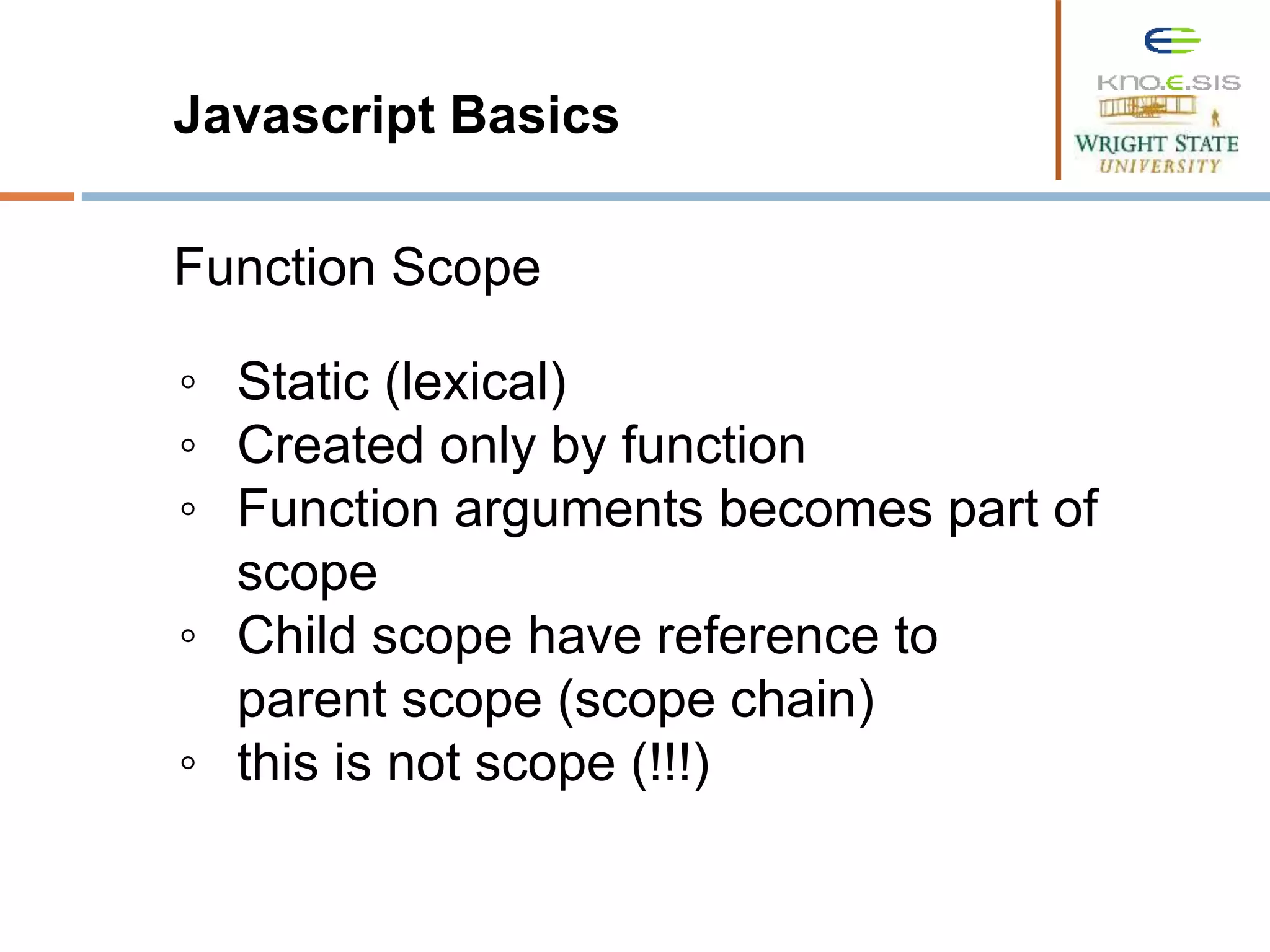
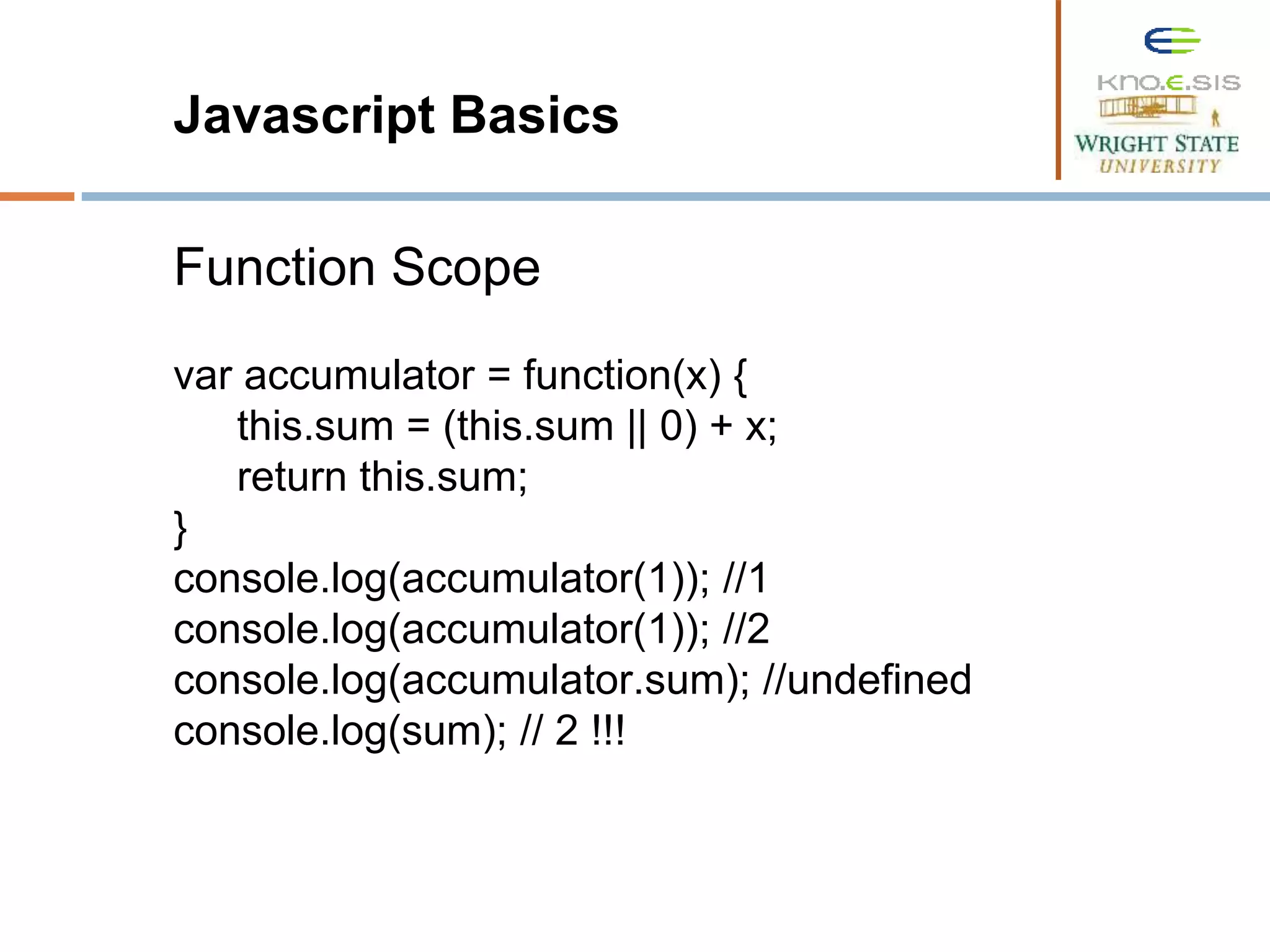
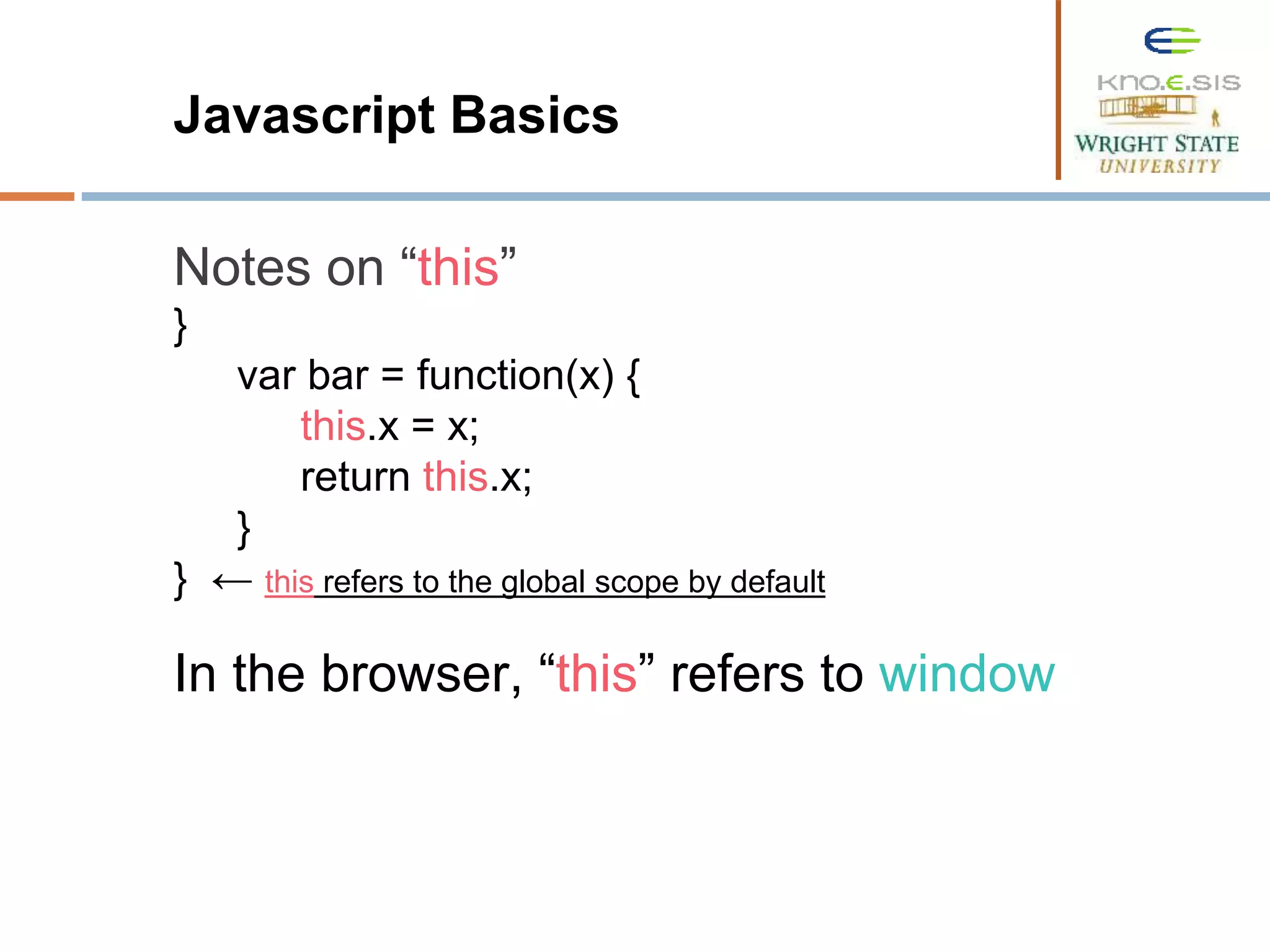
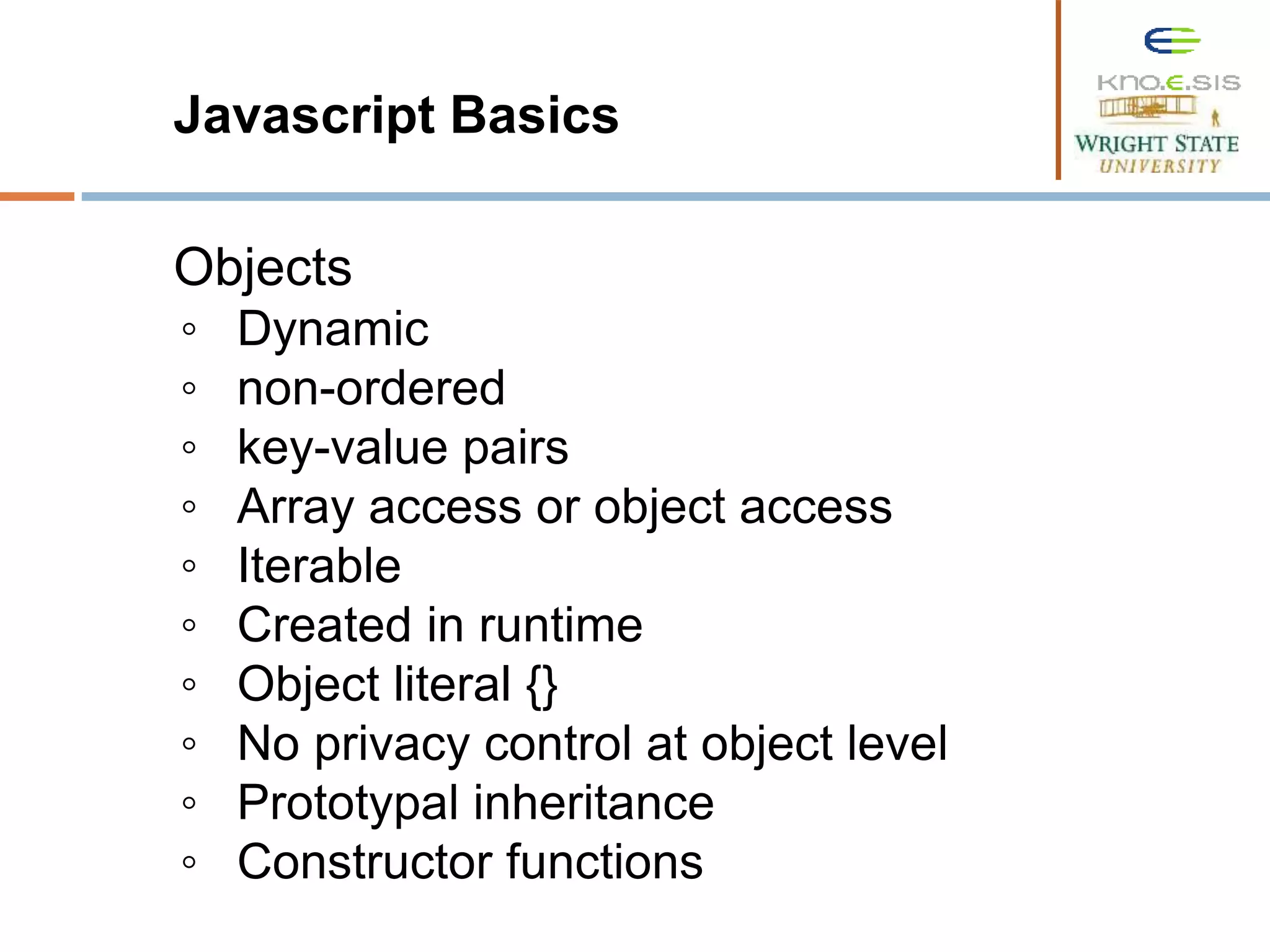
![Javascript Basics A Simple Object ◦ var obj = {}; A Little More ◦ var obj = { name: “Simple Object” } Access via ◦ obj.name ◦ obj[“name”]](https://image.slidesharecdn.com/csp1-150123133332-conversion-gate01/75/Lecture-5-Client-Side-Programming-1-18-2048.jpg)
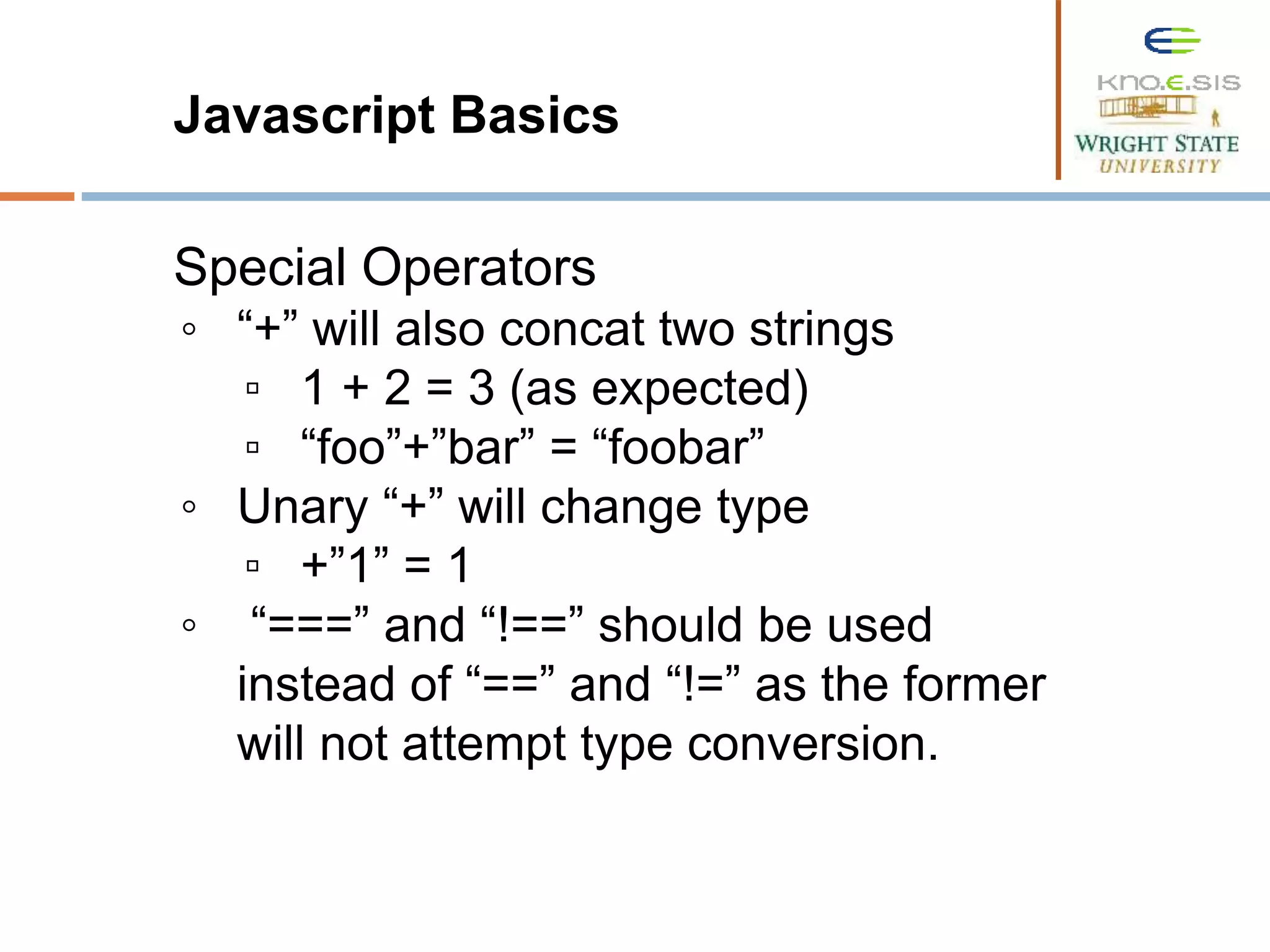
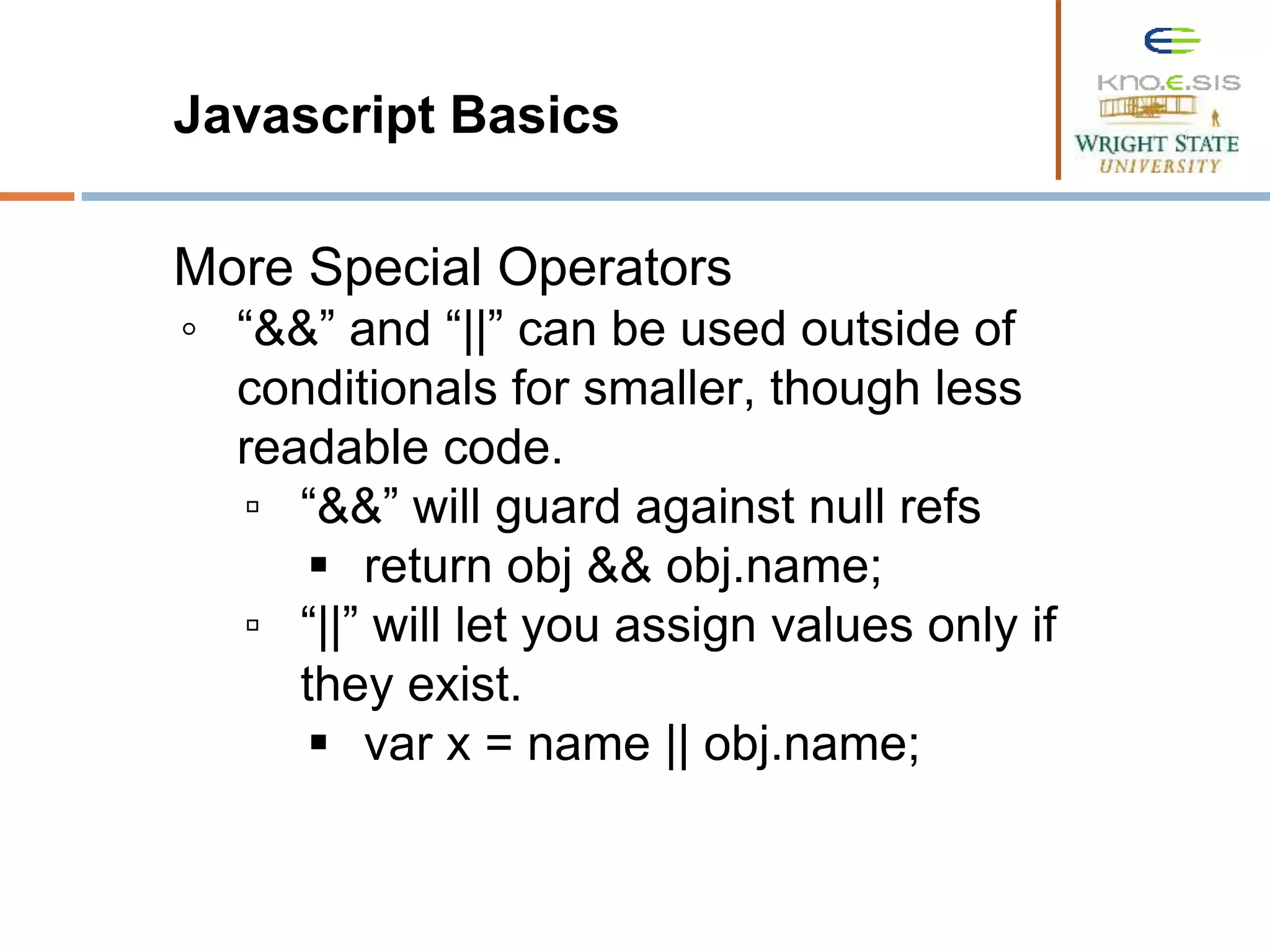
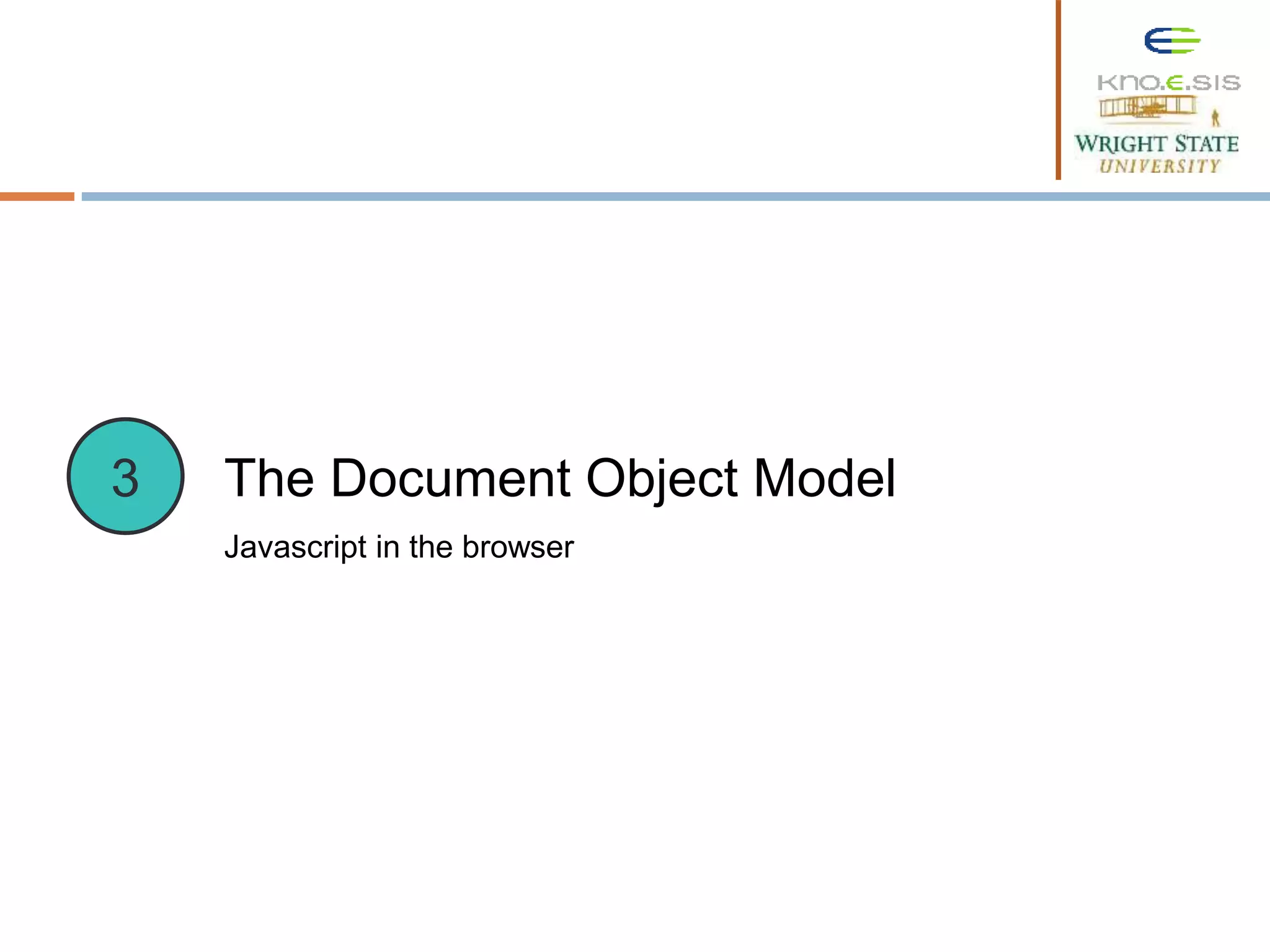
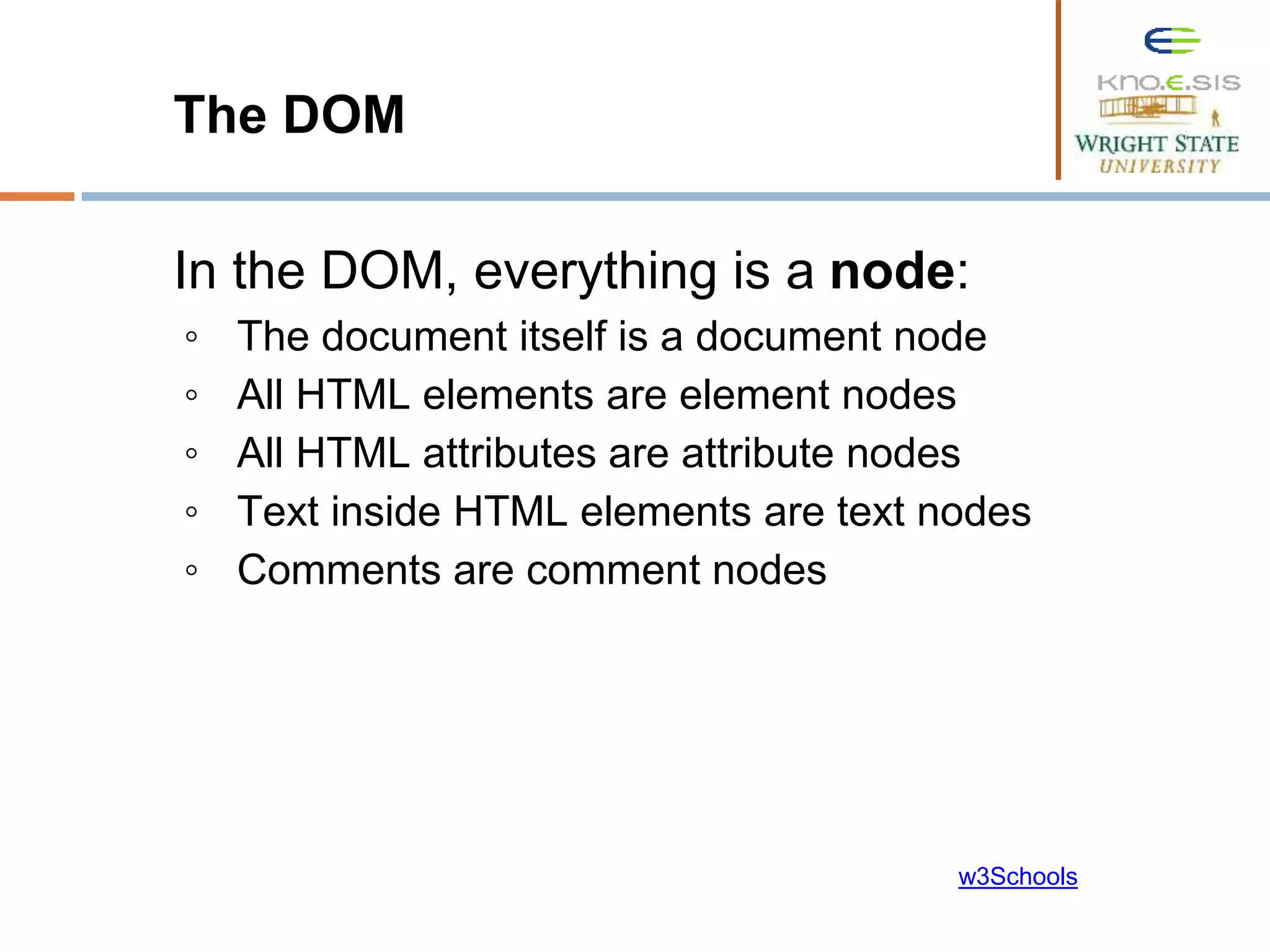
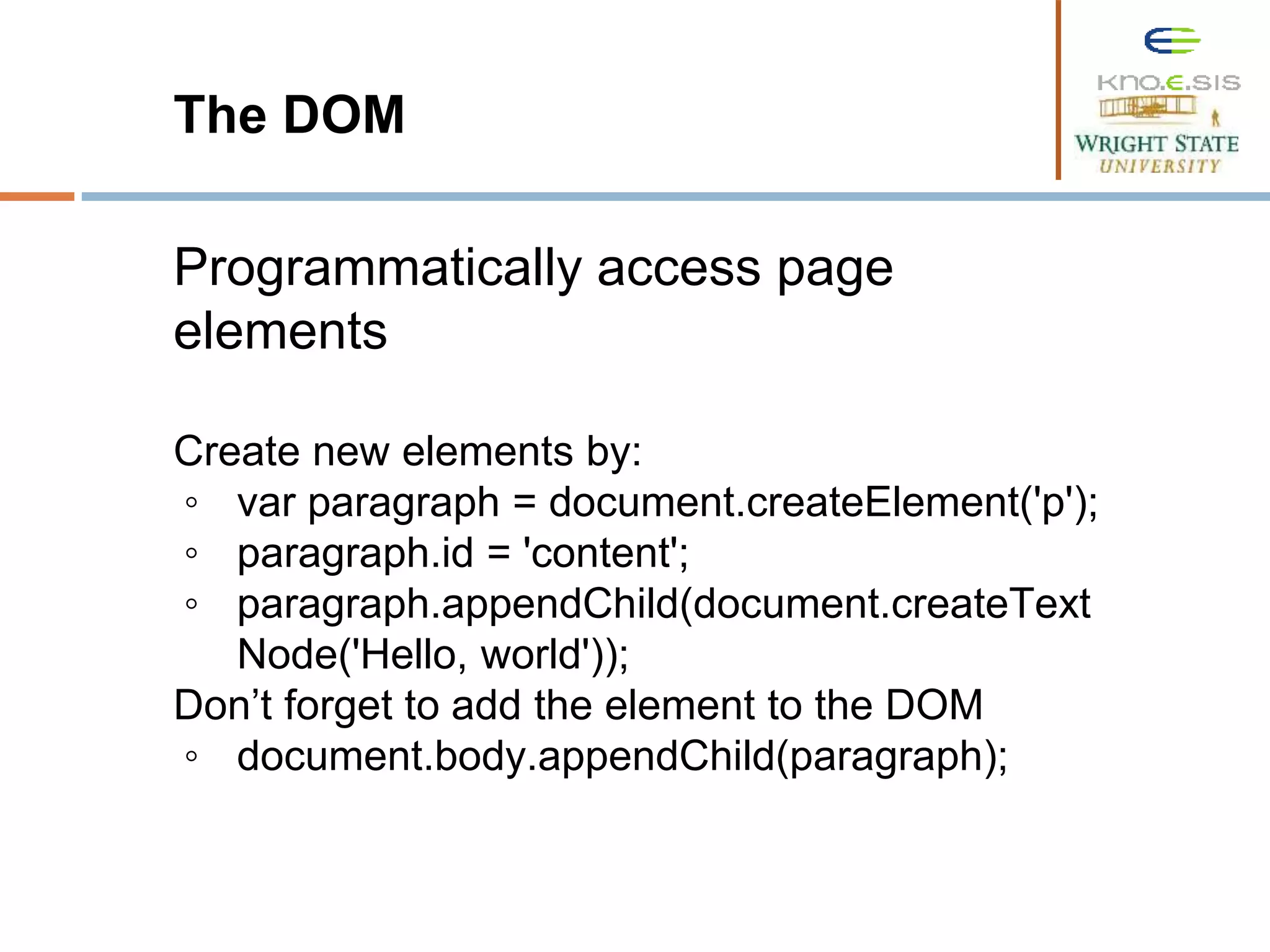
![The DOM Manipulate them by: Setting properties ◦ var element = document.getElementById('content'); element.style.color = 'blue'; Calling methods ◦ var firstNode = document.body.childNodes[0]; document.body.removeChild(firstNode);](https://image.slidesharecdn.com/csp1-150123133332-conversion-gate01/75/Lecture-5-Client-Side-Programming-1-24-2048.jpg)
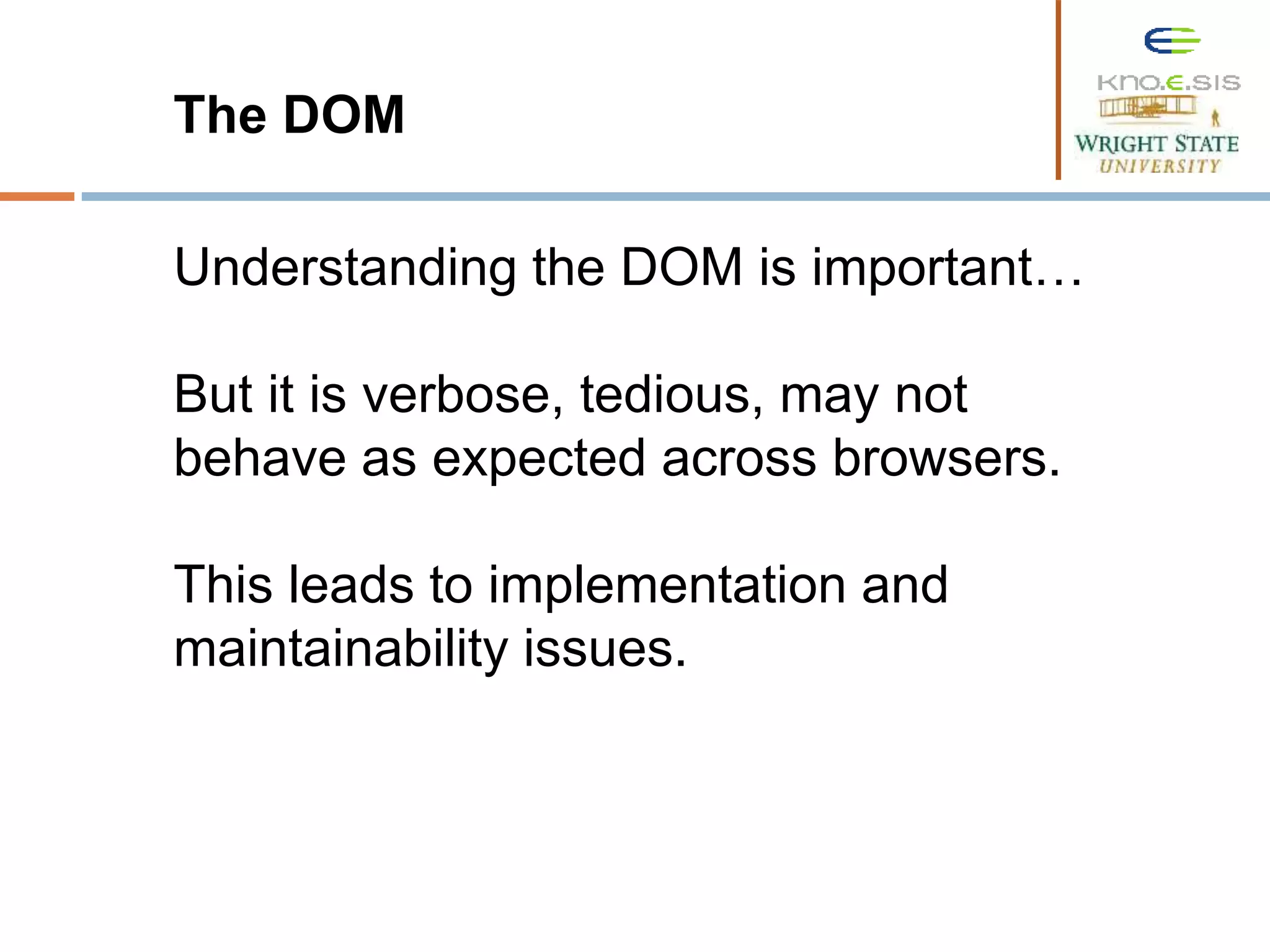
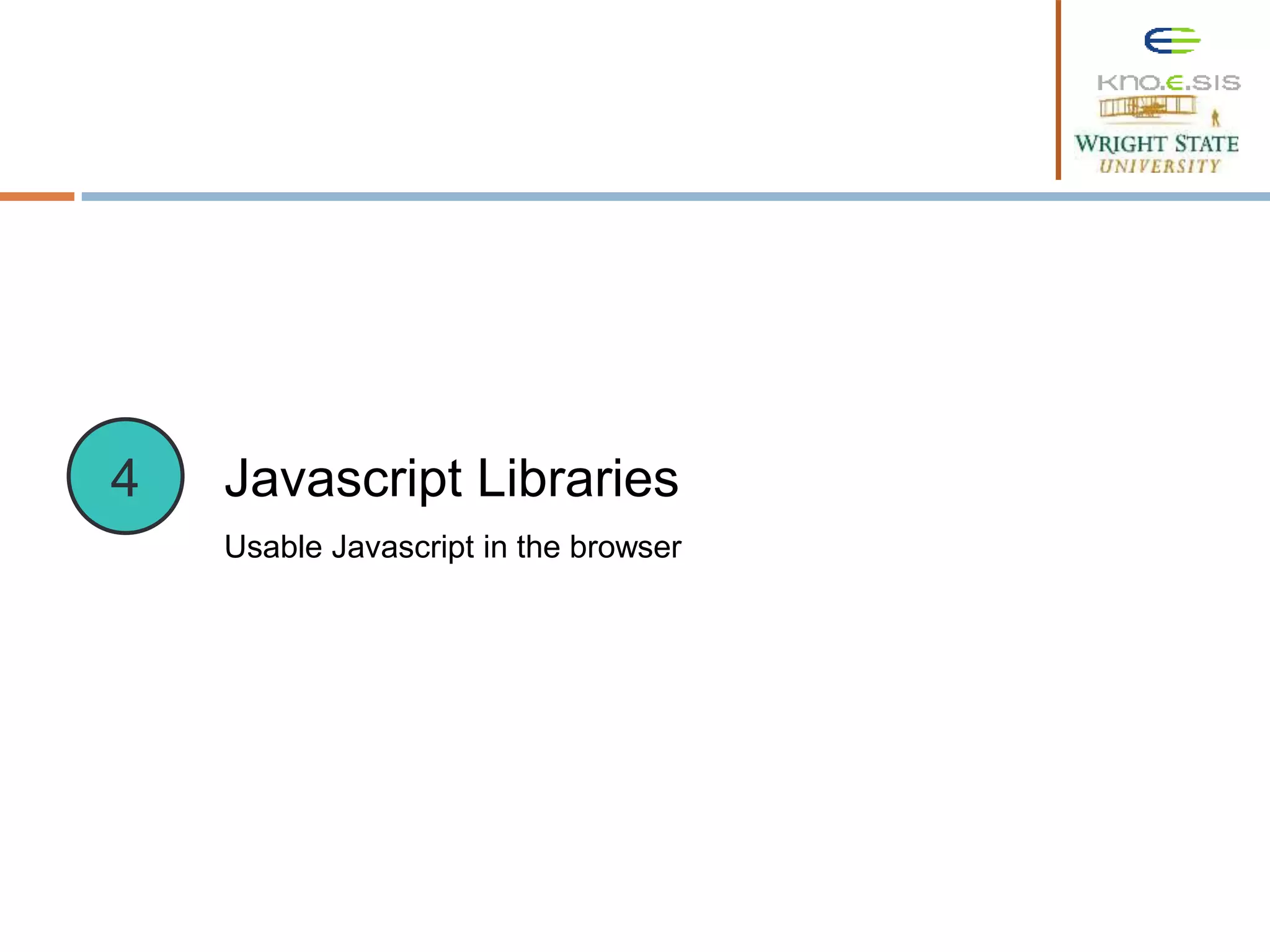
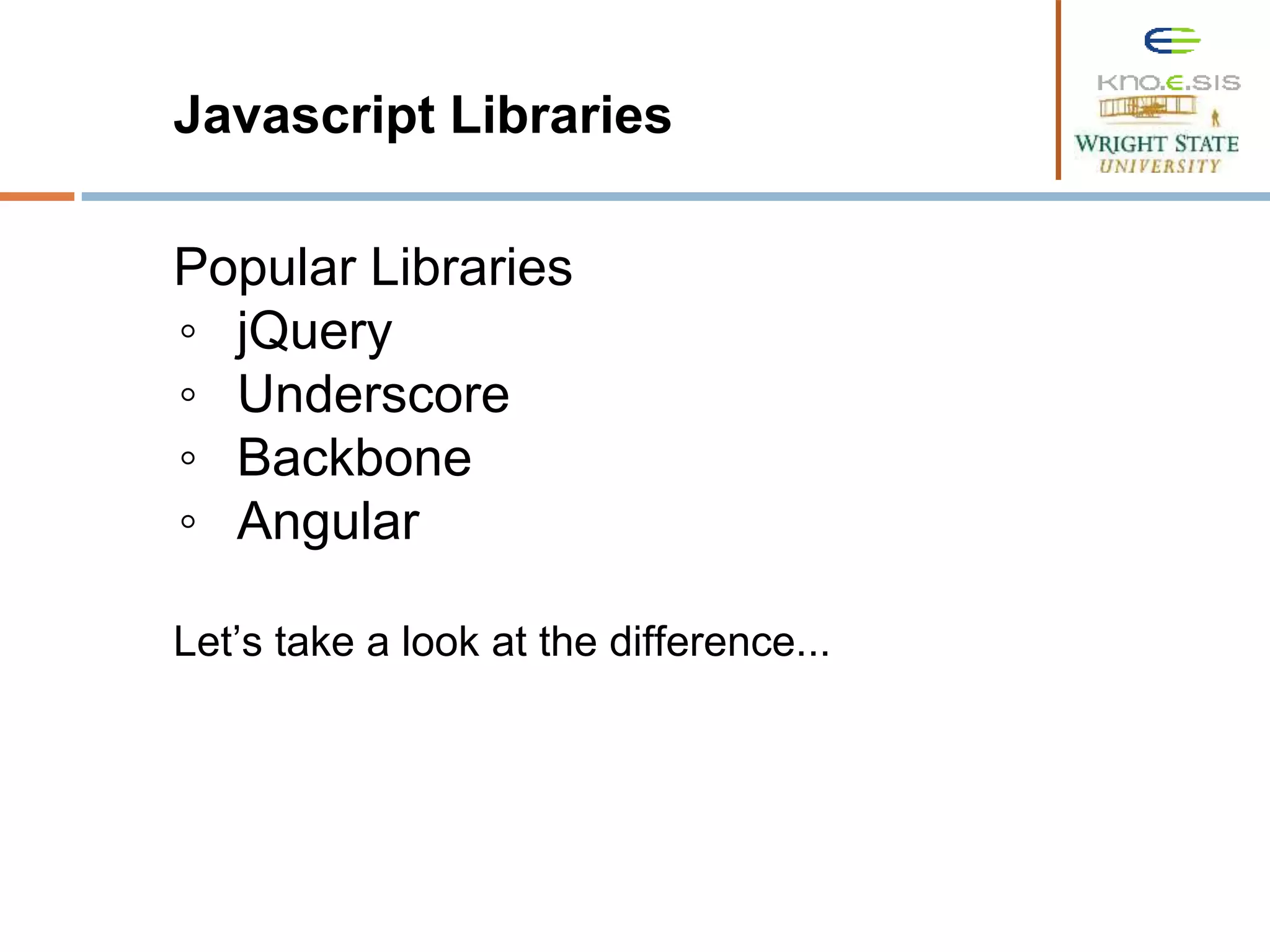
![Javascript var element = document.getElementById('content'); element.style.color = 'blue'; var firstNode = document.body.childNodes[0]; document.body.removeChild(firstNode); Javascript Libraries JQuery var element =$(“#content”); element.css(“color”, “blue”); or element.css({color:”blue”}) $(‘body:first-child’).remove();](https://image.slidesharecdn.com/csp1-150123133332-conversion-gate01/75/Lecture-5-Client-Side-Programming-1-28-2048.jpg)
